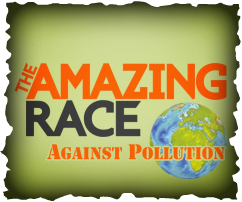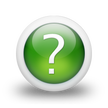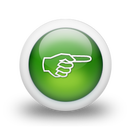
In this session you will take part in an environmental scavenger hunt aligned with both Science and Health Curriculums, grades 6-12, to experience first hand, BEGINNING TO END, what this type of digitally enhanced lessons can be like.
In the following classroom simulation you will:
Upon completing the simulation, facilitators will share how the lesson was created and you will have access to tutorials and resources to assist you in making your own digitally enhanced scavenger hunt activities for any content area and/or unit. Standards Aligned within this Lesson
In the following classroom simulation you will:
- CRITICALLY THINK about the impact of human activities on the environment;
- COLLABORATE with a team to unlock information;
- COMMUNICATE and REFLECT on measures necessary to protect the environment; and
- CREATE a brief presentation about your thoughts and observations concerning pollution in our local environment.
Upon completing the simulation, facilitators will share how the lesson was created and you will have access to tutorials and resources to assist you in making your own digitally enhanced scavenger hunt activities for any content area and/or unit. Standards Aligned within this Lesson

SESSION ZERO
- Take a moment to introduce yourself to the folks sitting at your table: SCAN the GETTING TO KNOW YOU QR code at your table.
- CONFIRM that your table i-Pad has the following applications: Haiku Deck and i-nigma QR Code Reader.
- Missing something? Use the cheat sheet at your table to check for apps, and consider adding i-nigma to your own mobile device.
- TAKE NOTES and feel free to jot down questions/thoughts, etc. throughout the lesson for our DEEP DIVE in Part II.
PART ONE | IMMERSION LESSON
ENTRY TICKET
|
watch the video for
information about pollution... CLICK ON THIS BUTTON |
What do you think of when you hear the word "pollution"? |
LET'S DISCUSS
Together, we will take a moment to DISCUSS our comments in the AnswerGarden above, and what we learned from the VIDEO.
Together, we will take a moment to DISCUSS our comments in the AnswerGarden above, and what we learned from the VIDEO.
GROUP PBL ACTIVITY | THE AMAZING RACE AGAINST POLLUTIONGetting Started - Created with Haiku Deck, presentation software that inspires |
OBJECTIVE: Teach others about the different kinds of pollution that exist in our environment and consider what we can do to protect our environment. 1. WORK in a Team to collect information
2. FOLLOW your MAP to locate information
3. CREATE a haiku deck presentation with the information collected
|

DEBRIEF DISCUSSION
- Did you learn something….or realize what you want(ed) to learn?
- What was fun/hard/frustrating?
- How would this translate in your learning environment?
PART TWO | HOW DID WE DO IT?
LET'S DISCUSS
Each step is one educators do intuitively, i.e. defining learning goals, our pedagogical methods. Technology supports the ease in which we can research and collect content and pull supportive web tools and resources from our "toolbox" (steps 3 and 4 in our PowToon). The most critical part, however, is building digital supports for our students and anticipating needs during a technology enriched lesson. Walkthrough of This Lesson
Each step is one educators do intuitively, i.e. defining learning goals, our pedagogical methods. Technology supports the ease in which we can research and collect content and pull supportive web tools and resources from our "toolbox" (steps 3 and 4 in our PowToon). The most critical part, however, is building digital supports for our students and anticipating needs during a technology enriched lesson. Walkthrough of This Lesson
REFLECTION AND QUESTIONS

- How do you envision this lesson translating to your content area?
- What tools modeled in this lesson do you see yourself adding to your own digital toolbox?
- Obviously this lesson modeled many digital tools and resources. How could you modify this kind of lesson with the amount of technology that best fits your comfort level?
TOOLS & TUTORIALS
During your immersion lesson you were exposed to many digital tools and resources - some that you interacted with, and others that were modeled within the activity. Each tool name is linked to where you can find the tool online. The "Tutorial" link takes you where you can find a simple 'how-to' to assist you in getting started.
MOBILE OPTIONS
RESOURCES
ISTE Standards | ISTE Standards for Students (ISTE Standards•S), ISTE Standards for Teachers (ISTE Standards•T)
Lesson Inspired from Alston, Daniel M., and Cynthia C.M. Deaton. "LEARNING CONNECTIONS: Teach Environmental Science with iPads, QR Codes, and StoryKit." ISTE Leading and Learning Magazine, May 2014. Web. 29 Apr. 2014. <http://www.iste.org/learn/publications/learning-leading/l-l-may-2014/learning-connections-teach-environmental-science-with-ipads-qr-codes-and-storykit>.
LiveScience Pollution Facts | Types of Pollution. Katharine Gammon, LiveScience Contributor, written August 27, 2012. <http://www.livescience.com/22728-pollution-facts.html>
Bill Nye the Science Guy: "Pollution Solution". Dir. Michael Gross and Darrell Suto. Perf. Bill Nye. Disney Educational Productions, January 12, 1996. Television.
ISTE Standards | ISTE Standards for Students (ISTE Standards•S), ISTE Standards for Teachers (ISTE Standards•T)
Lesson Inspired from Alston, Daniel M., and Cynthia C.M. Deaton. "LEARNING CONNECTIONS: Teach Environmental Science with iPads, QR Codes, and StoryKit." ISTE Leading and Learning Magazine, May 2014. Web. 29 Apr. 2014. <http://www.iste.org/learn/publications/learning-leading/l-l-may-2014/learning-connections-teach-environmental-science-with-ipads-qr-codes-and-storykit>.
LiveScience Pollution Facts | Types of Pollution. Katharine Gammon, LiveScience Contributor, written August 27, 2012. <http://www.livescience.com/22728-pollution-facts.html>
Bill Nye the Science Guy: "Pollution Solution". Dir. Michael Gross and Darrell Suto. Perf. Bill Nye. Disney Educational Productions, January 12, 1996. Television.

This work is licensed under a Creative Commons Attribution- NonCommercial 4.0 International License.
Created for the Friday Institute for Educational Innovation’s Digital Learning Collaborative by Brittany Burns and Jaclyn Stevens
Created for the Friday Institute for Educational Innovation’s Digital Learning Collaborative by Brittany Burns and Jaclyn Stevens





